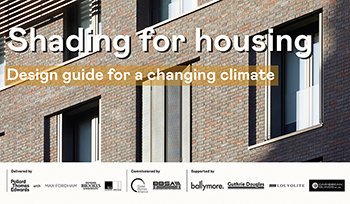Contract amendment
A contract amendment is to a formal change or modification to the terms and conditions of an existing construction contract. This can be necessary to accommodate adjustments that may arise during the course of a project, for example:
- Changes in the scope of work to be performed, including additions, deletions, or modifications to the original project plans and specifications.
- Adjustments to the project timeline, which might include extending or shortening the completion date or adjusting intermediate milestones.
- Modifications to the contract price, which could involve increasing or decreasing the overall budget based on the changes to the scope of work or other factors. It can also include changes to the payment schedule.
- Substitutions or changes in materials, products, or workmanship specifications that were initially agreed upon.
- Adjustments to ensure the contract remains compliant with any new or updated laws, regulations, or standards that may come into effect during the project.
- Revisions to the allocation of risks and responsibilities between the parties involved, such as changes in insurance requirements or liability clauses.
- Changes to the methods and processes for resolving disputes, which could involve amending arbitration clauses, mediation procedures, or other conflict resolution mechanisms.
Contract amendments are typically documented through formal written agreements signed by all parties involved in the original contract. This documentation ensures that there is a clear, mutual understanding of the changes and helps prevent disputes related to misunderstandings or misinterpretations of the modifications.
See also: Variations.
[edit] Related articles on Designing Buildings
- Abortive work in building design and construction.
- Architect's instruction.
- Change control procedure for building design and construction.
- Change order for construction contracts.
- Compensation event.
- Confirmation of verbal instruction.
- Contract sum.
- Extension of time EOT in construction contracts.
- How to prepare a claim for an extension of time.
- Loss and expense.
- Payment for extra work.
- Prime cost sum.
- Provisional sum.
- Relevant event.
- Relevant matter.
- Scope of work.
- Valuation of interim payments.
- Variations.
Featured articles and news
Shading for housing, a design guide
A look back at embedding a new culture of shading.
The Architectural Technology Awards
The AT Awards 2025 are open for entries!
ECA Blueprint for Electrification
The 'mosaic of interconnected challenges' and how to deliver the UK’s Transition to Clean Power.
Grenfell Tower Principal Contractor Award notice
Tower repair and maintenance contractor announced as demolition contractor.
Passivhaus social homes benefit from heat pump service
Sixteen new homes designed and built to achieve Passivhaus constructed in Dumfries & Galloway.
CABE Publishes Results of 2025 Building Control Survey
Concern over lack of understanding of how roles have changed since the introduction of the BSA 2022.
British Architectural Sculpture 1851-1951
A rich heritage of decorative and figurative sculpture. Book review.
A programme to tackle the lack of diversity.
Independent Building Control review panel
Five members of the newly established, Grenfell Tower Inquiry recommended, panel appointed.
Welsh Recharging Electrical Skills Charter progresses
ECA progressing on the ‘asks’ of the Recharging Electrical Skills Charter at the Senedd in Wales.
A brief history from 1890s to 2020s.
CIOB and CORBON combine forces
To elevate professional standards in Nigeria’s construction industry.
Amendment to the GB Energy Bill welcomed by ECA
Move prevents nationally-owned energy company from investing in solar panels produced by modern slavery.
Gregor Harvie argues that AI is state-sanctioned theft of IP.
Experimental AI housing target help for councils
Experimental AI could help councils meet housing targets by digitising records.
BSRIA Occupant Wellbeing survey BOW
Occupant satisfaction and wellbeing tool inc. physical environment, indoor facilities, functionality and accessibility.






















